
Photo courtesy: indi.ca
By Tisaranee Gunasekara | Asian Tribune
.............................................................................................................................................................................................
And yet, despite this official obsession with security, armed predators roam the country, from Colombo to Ampara, seemingly at will, attacking unarmed victims and vanishing into thin air. Innumerable police investigations follow, to no avail. The perpetrators are never caught.
Last Friday’s attack on the office of the Siyatha TV station took place in a high security zone, quite close to the Temple Trees. This is an area teeming with police and armed forces personnel and dotted with stationary and mobile checkpoints. Despite these extreme security measures, an armed gang entered the Siyatha office in the early hours of Friday morning, assaulted a couple of employees on duty, carried out a slash and burn attack lasting about 15 minutes and got away scot-free. Either Colombo is not safe, despite the near hysterical hype on security and the ubiquitous presence of gun-toting servicemen; or the attack on Siyatha was carried out with the knowledge (if not at the behest) of powers-that-be. Either the government is criminally incompetent; or the government is criminally complicit. These are the only two possible conclusions, given the current Lankan conditions.
Friday’s slash and burn attack on Siyatha is remarkably similar to the January 2009 attack on the MTV headquarters in Pannipitiya. The attackers on both occasions followed a similar modus operandi. The attacks were carried out in the night; though few in numbers, the attackers acted not haphazardly but with precise intent, with the aim of terrorising psychologically and incapacitating technologically. The resultant image was not of blustering thugs but highly trained professionals. Moreover both media organisations are on the anti-Rajapakse side of the political divide. Siyatha began as a pro-government venture until the schism between the Rajapakses and Sarath Fonseka caused a limited re-alignment in the Lankan polity. Siyatha is said to be owned by the Kariyapperuma brothers, one time intimates of President Rajapakse and fortunate recipients unlimited presidential largesse. Not so now, since the Kariyapperumas opted for Gen. Sarath Fonseka during the Presidential election, and thus fell from grace. According to media reports, post-Presidential election, the regime withdrew all state ads from the Siyatha newspaper, forcing it to fold up. It could be argued that Friday’s attack heralds a new stage in this old campaign to drive the Siyatha media out of existence.
Anti-democratic politics and anti-poor economics
The timing of the Siyatha attack is interesting – and revealing. The attack comes hard on the heels of the EU decision to withdraw the GSP+ facility from Sri Lanka. Media freedom was one of the most important pre-conditions put forward by the EU for the renewal of the GSP+ facility. So long as there was a possibility of regaining the GSP+ facility, this pre-condition acted as a deterrent on those who equate peaceful opposition with treachery and regard media freedom not as a pillar of democracy but as a dangerous de-stabiliser. The power-wielders would have acted with restraint and refrained from resorting to excessive measures in their desire to regain the GSP+ facility. Was that why there was a lull in the anti-media war, subsequent to the disappearance of Prageeth Ekneligoda? Was that why no media personnel or organisation was attacked in the last several months? Was it a coincidence that the attack on Siyatha happened within weeks of the regime abandoning all hopes of regaining the GSP+ facility?
Does the attack on Siyatha signal the full scale resumption of the war on media? Or is it an extension of the witch hunt against Gen. Fonseka and his supporters? Either way, Siyatha attack demonstrates that violent intolerance is alive and well in Rajapakse Sri Lanka. Siyatha attack is a warning to all media organisations and personnel that the Big Brother is watching.
The attack on Siyatha was not an isolated incident. On the night of 17th July, an armed gang descended on the Ragamwela, a village in Ampara. According to Panama Mudiyanselage Bandara, a resident of Ragamwela, “They took us out and threatened to kill us. They had two T 56 rifles. I managed to flee but by the time I turned back they were setting fire to everywhere” (BBC – 18.7.2010). When some of the villagers ran to the nearby STF post for help and protection, the STF personnel refused to intervene, saying that they do not have the authority to enter the area!
There are curious similarities between the Siyatha and Ragamwela attacks. In both instances, the perpetrators acted with impunity, knowing that they were immune both from discovery and from punishment. This indicates the presence of powerful protectors if not masters. In both instances the attackers acted in a terroristic manner aimed at frightening the victims into compliance. And in both instances the attackers got away despite security presence.
The Ragamwela attacked happened almost a fortnight ago. So far the authorities are maintaining a deafening silence while “local media organisations say that the journalists were stopped from visiting Ragamwela by police” (ibid). Ragamwela is strategically located close to several tourist hotspots. Its economic value would have increased several-fold, post-war, with the expected boom in tourism. Since the attack, the villagers are being prevented from entering their lands, by the police. The Chief Sanganayake of Wellassa-Digamadulla region, has complained to the Human Rights Council that the Pottuvil police is barring him from observing ‘vas’ in the village temple. The attackers chased away the residents of Ragamwela by violent means; the authorities are abusing the law to keep the villagers away. Does this not point to a strong link between the attackers and the authorities? Since the attackers and the authorities seem to be working in tandem, is it not logical to conclude that a major power-wielder is behind the attack? Is this the reality behind the much hyped Nagenahira Navodaya?
Is the dispossession of Ragamwela villagers linked to the ongoing campaign by the authorities to confiscate economically strategic land occupied by the have-nots, under the guise of ‘clearing unauthorised structures’? Will the tragedy of Ragamwela be repeated in other villages with economic or tourist value? Is the Rajapakse ‘nation-building project’ a confluence of a Sinhala supremacist politico-military strategy and an anti-poor economic strategy? In such a nation-building project there will be no space for freedom of information and expression. This is probably why the regime is moving with unseemly haste to set up a media authority, a legal compliment to physical attacks on media organisations and personnel who refuse to tow the line.
Already there are many areas and issues that an absolute majority of the local media are treating as off-limits. For instance, there is hardly any coverage about the macro use of Chinese prison labour in Chinese funded mega construction projects. That a large number of Chinese convicts are present in various parts of the country, engaging in manual labour in Chinese funded infrastructure projects is an open secret. This is an unprecedented development which can have long term repercussions, both national and regional; and yet it is hardly mentioned in the media. Nor is there a discussion about the regime’s plans to settle families of armed forces personnel in specially constructed cantonments in the North. This is a development which can have a serious impact on future inter-ethnic relations and thus on peace and stability. And yet, the issue is barely mentioned in the mainstream media. By and large, Sri Lanka has a compliant media; still the Ruling Family does not seem to be satisfied, as the recent judicial and extra-judicial attempts to curb free reportage amply indicates.
Positive Reportage or Spin?
In the last four and a half years the regime used patriotism to cover up for its abuses in the North-East and the right of sovereignty to escape from retribution for these wrongdoings. How long can these tactics work, post-war? This uncertainty would make the regime extra-sensitive to media criticism and enhance its determination to use positive reportage alias spin to hide unpleasant realities from the public eye.
The need to muzzle what will be deemed officially as ‘negative reportage’ will increase as the economic woes of those at the bottom and the middle of the economic totem pole exacerbates. The loss of the GSP+ facility has already begun to impact on the living standards of garment factory employees, with the factories in the Katunayake FTZ reducing overtime payments and other non-financial benefits. According to media reports, the government has no contingency plan to deal with the negative effects of the loss of the GSP+ facility and has not even met factory owners to discuss potential problems and possible remedies. Moreover, 35% of industries benefiting from the GSP+ are non-garment exports, most of them small scale businesses. What will be their fate, with the removal of the GSP+ facility?
According to a new World Bank Report, “Sri Lanka under-invests in education compared to other middle-income and developing countries” (The Towers of Learning). Sri Lanka spends 2.8% of GDP on public education way below the average for lower-middle income countries, 4.3%. Sri Lanka ranks 82nd in the Knowledge Economy Index, below the average for lower-middle income countries; our Global Competitiveness Index Ranking was 70 in 2007-2008 and 77 in 2008-2009. Hardly a performance worthy of a country aiming to become the Miracle of Asia! All the more reason for ‘positive reportage’ which hide gloomy realities, and a totally compliant media willing to play by the Rajapakse rules.
A democracy is not made of periodic elections alone. A democracy is not real or complete without a free media, a media that is willing to speak at any turn (including out of turn) and to take up any issue (including unpopular ones). In a democracy media freedom depends on two conditions – a state and a government willing to respect media freedom and a media not prone to self-censorship. Neither condition is present in Sri Lanka of today in sufficient degrees. These critical absences do not auger well for the future of Lankan democracy.
© Asian Tribune

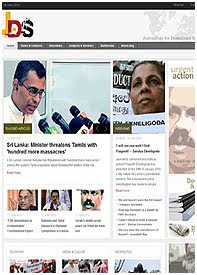

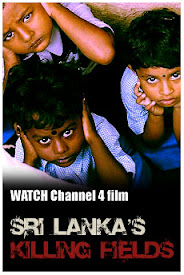

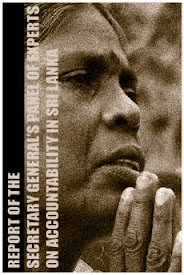



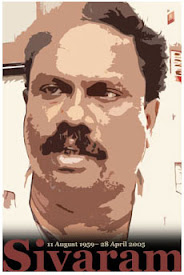

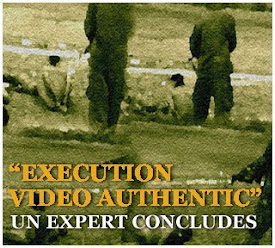

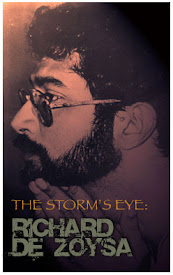

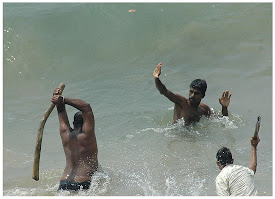
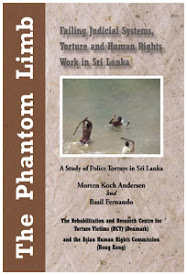
No comments:
Post a Comment